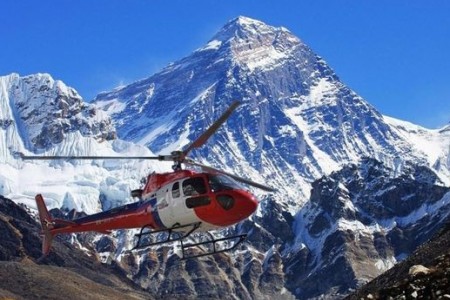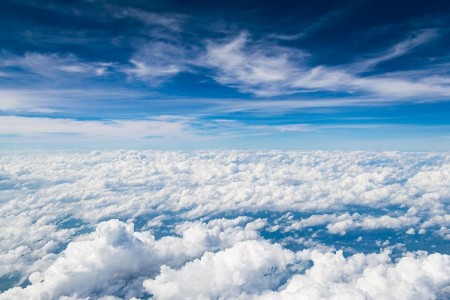Island Peak (6,189 m), also called as Imja Tse, is a mountain in the Himalayas of eastern Nepal. The peak appears as an island in a sea of ice when viewed from Dingboche. Hence, it was named as Island Peak in 1953.
Island Peak nestles in the heart of the Khumbu region in the Sagarmatha National Park. Standing in between Ama Dablam and Lhotse peaks, the peak is considered as a harder climbing peak by the climbers.
Island Peak Climb offers an awesome experience of majestic views of Himalayan ranges, valleys, and amazing glaciers.
Island peak is popular for its difficulty and beauty shining in the Everest region. During the trip, you can explore the pristine tradition, culture, and religion of the Himalayan Sherpa people. You can witness amazing glacial moraines, Buddhist monasteries, prayer rocks, and other small chortens.
You can view breathtaking Himalayan ranges of Nuptse peak, Lhotse Peak, Lhotse Middle, Lhotse Shar, Mt Makalu, Ama Dablam, etc. Also, you will walk across the Sagarmatha National Park where you will see different species of flora and fauna.
The climb is physically tough because of the altitude. The hardest part is the steep headwall at the end of the climb. Plus, there are innumerable crevasses on the way to the peak, so you must be very careful as you proceed further.
The degree of difficulty varies from person to person depending on their ability to acclimatize and maintain physical conditioning. The Island Peak climb is used by many climbers as a gear up climb for higher and more precipitous peaks. The climb is endlessly exhilarating!
Are you planning your Mera Peak Climbing? Don't hesitate to contact us. Tell us your requirements, we can help you to make your trip memorable.
How difficult is the Island Peak Climbing?
Climbing at altitude is a dangerous sport. It isn’t easy. Island peak is a difficult climb at an extreme altitude. Before going for the Island peak climb, you must understand the risks of going to higher altitude.
Take seriously the climbing or physical challenges. During the trek/climb, the level of oxygen in the air becomes less at high altitudes. So, you must acclimatize to the oxygen deficiency gradually along the trail.
The first part of the ascent is physically very hard. You will trek through a rough terrain at over 5000m. Once you reach the glacier field, you must rope-up and wear crampons. The foot of the headwall is the toughest part of the climb. The ascent is very steep and the air at its thinnest. However, the climbing route is safe because of fixed lines.
With strong determination, you will get up to the summit ridge. The climb from summit ridge to the top is a short and easy ascent.
At the time of mountaineering, you must take responsibility for your safety. If you fail to maintain hygiene and safety, the climbing will not suit you.
The route to Island Peak Base Camp (5,100m) itself is a challenging task. If you choose to climb Island peak on a 10-day trip, you are lowering your chances of easy success. But if you choose to spend more days on the trek, the climb will be easier. Be familiar to mountains, the weather, and climatic conditions there. This aids to your climb.
Location of Island Peak
Island Peak is situated in the Everest region of Nepal. It lies exactly on the Nepalese and Tibetan border. The peak is an extension of Lhotse and The Everest.
There is only a single gateway to climb Island peak i.e the trek route through Lukla. We fly to Lukla airport from Kathmandu, TIA. During the flight, you may see Everest. But Island Peak remains hidden until we reach Bouche on day 6 or 7th day of the trek. Trekking through the heart of the Everest region, you will reach Island peak.
Weather Conditions at Island Peak
While climbing the Island Peak, you can experience a wide range of temperatures. Depending on the month of a climb, temperature varies from +30°c to –15°c.
April, May, late September, and October are the best time for Island Peak climb. While climbing in these months, you will experience a temperature ranging from 0°c to 15°c during the day. However, the temperature lowers down to a range of – 5°c to – 10°c during the night on Island Peak.
Mostly, mornings are freezing inside your tent. But as the sun comes up it gets warmer. If the weather is cloudy and windy, this will make it feel colder. For a colder weather, you will need 4 layers for your summit bid. But for the first couple of days on the trek, a singer layer is sufficient.
Be prepared for every type of weather while climbing Island peak.
Is Island Peak Climb doable?
After reading all these, you must be wondering, Can I do the climb? Here we try answering the query.
Island Peak is achievable for most people. A positive frame of mind is important for a success. Also, you must get enough technical training and physical conditioning before you go.
Go camping, get out and use your gears. Adjust to camping life. It will be a routine, once you are off to your climb. Try out in all sorts of weather. Get physical training. Be serious about how to prepare physically.
Besides physical fitness, the key to a successful climb is an excellent acclimatization schedule. Always feel confident in your ability and your gear.
A sufficient amount of time for the climb is also equally essential. Spare 2-3 weeks time for the climb. If so, you'll have enough time to adapt to the temperature and weather changes in the mountain.
Tackle each day with courage. Concentrate on each days walking. Enjoy the journey, than just focusing on the top. And, you are already at the summit.
Best Time to Climb Island Peak
The best months to climb Island peak are April, May, October & November.
The temperature and weather conditions during these months are suitable for the climb. The weather isn't wet as in the rainy season. The precipitation is also less.
Also, you won't have to face the extreme cold as in the winter. Trekking/ climbing during the best seasons means increased chances of success.
Accommodations
During the treks, you will stay at many tea houses available along the route. Whereas, you must adapt to a tent accommodation, as you begin climbing. Your camping begins from the Base Camp.
Most of the teahouse accommodations provide shared rooms and good toilet facilities. However, for the tent, you will be provided 4-season sleeping bag and foam mattress. The toilet facilities will be provided according to the necessary natural preservations.
While trekking in upper elevation, you have to share the room with twins. You can get a single room by paying extra charges. But there are some cases even you may not even find single rooms.
Are you planning your Mera Peak Climbing? Don't hesitate to contact us. Tell us your requirements, we can help you to make your trip memorable.
Food and water
You must drink 4 – 6 liters per day during the Island Peak climb. Your body dehydrates faster at higher altitude. Also, you are exercising while walking and climbing. So, keep drinking enough water.
Due to deficiency of oxygen at altitude, your body is more likely to create more red blood cells (to carry oxygen faster throughout your body). As a result, your blood thickens. So, to keep your body functionality effective, you must hydrate yourself regularly. You may use Aspirin in your water. This helps in thinning your blood.
Anything you eat must be carefully chosen. During the climb/ walk, you are regularly exercising your body. To supply the required energy to your body, consume loads of carbs, protein and necessary food. Foods are the fuel needed to drive you during the climb.
Fees and Permits for Island Peak Climb
You need a climbing permit to climb Island Peak. You will need permits to enter the Sagarmatha National Park as well. On the route, there are regular security checkpoints. You must show your permits to pass through them. You will need these two permits:
Local (Everest Region) Area Permit: Nrs. 2000 ( US $20)
Island Peak climbing permit cost according to the four seasons:
March, April, and May: US $250
June, July, and August: US $70
September, October, and November: US $125
December, January, and February: US $70
Permits are for the sake of the environment and for your safety. Do not avoid them. We suggest you get your permit from associated organizations in Kathmandu.
Share us about your plans and preferences, we will get the permits for you.
Preparations for Island Peak Climb
For a successful Island Peak Climb, your physique plays a vital role. You must be ready starting from your fitness to the trekking and climbing experience.
It might take you a year (in max) or 4-6 months to prepare yourself for the climb. Your previous experiences on mountaineering are also important. The key to success builds up with your ability to adapt to the lack of oxygen and your technical experiences.
While adapting to a mountain environment, you must cope with living in a tent and maintaining your personal hygiene. Keep your mindset in a positive light and you are already moving towards success.
Hill walking is an important and easy training you can do. While doing so, you will experience an easy climb on the Island peak.
Clothing and gear for Island Peak Climb
- A comfortable hiking boot for trekking up to Island Peak Base Camp.
- Good gloves to keep your hands warm on summit night. Also, gloves must be comfortable when you are climbing using ropes, carbines, and other mountaineering equipment.
- A warm hat with a buff to cover your mouth. A buff keeps moisture in your mouth and keeps your throat wet, and neck warm.
- A fleece or down jacket. You can wear them at night and for your summit bid.
- Camera and accessories
- Lightweight trekking pants. You will need thermal underwear for summit night.
- Sock liners, wool socks and a couple of light layers.
(Clothing and gear may differ depending upon the season/ month of the climb.)
Essential Kits for Island Peak Climb
- Climbing Helmet: Choose a good quality climbing helmet. Make sure your warm cap fits under your helmet.
- Climbing Boots: High altitude, Insulated stiff-soled climbing boots.
- Crampons: C2 crampons that fit your climbing boots.
- Climbing Harness: Good quality climbing harness.
- Ascending device or Jumar
- Descending or belay device
- Tape sling: UIAA tested 220cm open tape sling or 2 x 120 cm closed tape sling
- Carabiners: 2 x lockable carabiners. 2 x non-locking carabiners
- Prusik loop: Best quality prusik loop
- Ice axe: An ice axe with a wrist strap for climbing
Tips for Climbing Island Peak
- Avoid Spring Snowfall and Winter Winds. The climb isn’t favorable between December and Mid-February. Heavy snow and bitterly cold winds at the summit (-40C) makes the summit difficult. During months from February to March, the climb can be difficult due to heavy fresh snow.
- Make sure you have the right training. Physical fitness is a must for Island Peak climb. The trip is a steep hike and climbs from 5,100m up to 6,189m. The most difficult part of the climb is the final steep section up the headwall before reaching the summit ridge. Local hill or stair climbs with some weight are the best ways to prepare for the climb. You should be able to comfortably hike all day.
- Pack the right clothing and gear. Having the right gear can make your trip successful. You might even fail to climb because of bad packagings. So, wisely pack your backpack with appropriate clothing, kits, and gear.
- Climb with a qualified climbing guide. You cannot attempt a climb alone unless you are a highly experienced climber. Make sure that you are climbing with a professional climbing Sherpa who can fix ropes, manage training, and gets you safely up and down the Island Peak.
- Create a right acclimatization schedule. When you are going above the danger zone i.e at 5,500m to 6,189m, you need the right acclimatization schedule. Altitude sickness is a real challenge to deal with. So, take your time and acclimatize well.
- Have previous altitude experience. Having previous trekking or climbing experiences will help you much in your preparation for Island Peak. You are more likely to adapt to varying oxygen levels and with geographical challenges if you are not a beginner.
- Know your knots. To climb the Island Peak, you must know how to tie different climbing knots. Also, you must learn to use all the climbing kits like ice axe and crampons.
- Have the right attitude! A positive attitude towards the experience impacts both your success and enjoyment. Trekking in the Himalayas is always challenging. Not every day goes smooth. Keep strong and positive thinking and you'll succeed.
Conclusion
The trail to Island Peak is technically difficult. But anyone who has previous trekking experiences or no experience can ascend the peak. But, you must prepare well with the appropriate gears and physical training plus the fitness.
Keep in mind, the trekkers must be physically fit and conditioned.
However, we do not recommend that you try Island Peak as your first climb.
For further information on this trip, do contact us.



